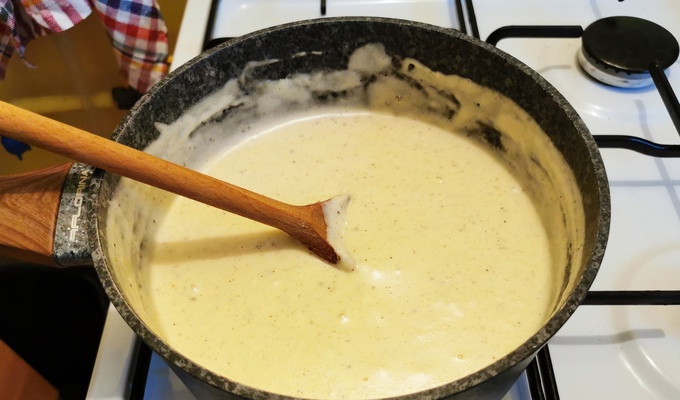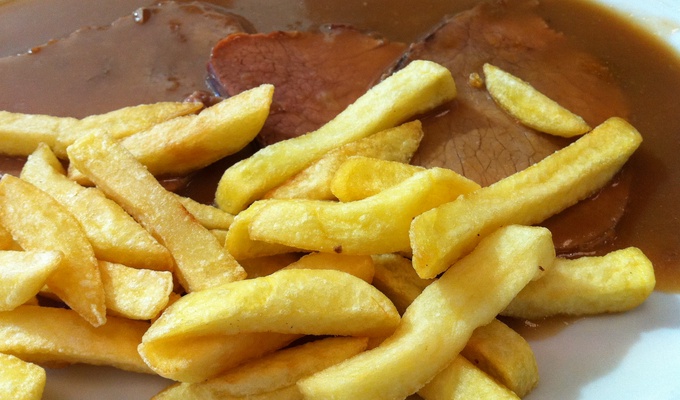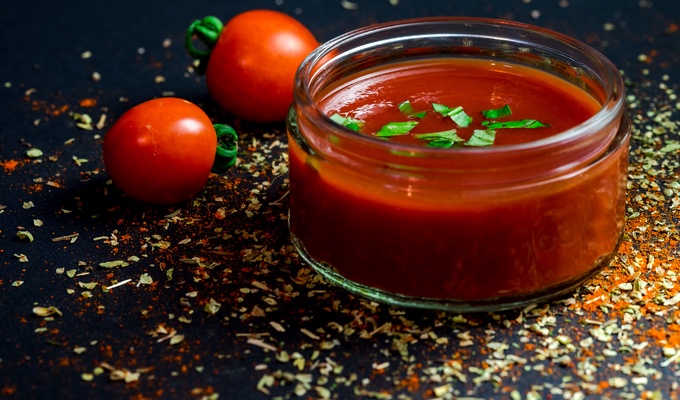In French cuisine, the mother sauces, also known as grandes sauces in French, are a group of sauces upon which many other sauces – "daughter sauces" or petites sauces – are based. Different sets and classifications of mother sauces have been proposed since at least the early 19th century.
The most common list of mother sauces in current use is attributed to chef Auguste Escoffier and based on those presented in the 1907 English-language edition (A guide to modern cookery) of his seminal cookery book Le guide culinaire:
- Béchamel sauce: White sauce, based on milk thickened with a white roux.
- Espagnole: Brown sauce based on a brown stock reduction, and thickened with a brown roux. Ingredients typically include roasted bones, bacon, and tomato (puréed or fresh).
- Tomato sauce (sometimes "Tomate" or "Tomat"): As well as tomatoes, ingredients typically include carrots, onion, garlic, butter, and flour, plus pork belly and veal broth.
- Velouté sauce: Clear sauce, made by reducing clear stock (made from un-roasted bones) and thickened with a white roux. Velouté is French for "velvety".
- Mayonnaise sauce: Warm emulsion of egg yolk, oil, and lemon juice or vinegar (Hollandaise being a daughter sauce ).
The original French editions of Le guide culinaire did not include Hollandaise as a grande sauce, but separately described mayonnaise—a cold emulsion of egg yolk with oil and vinegar—as a mother sauce for cold sauces; this was not included in the English edition.




